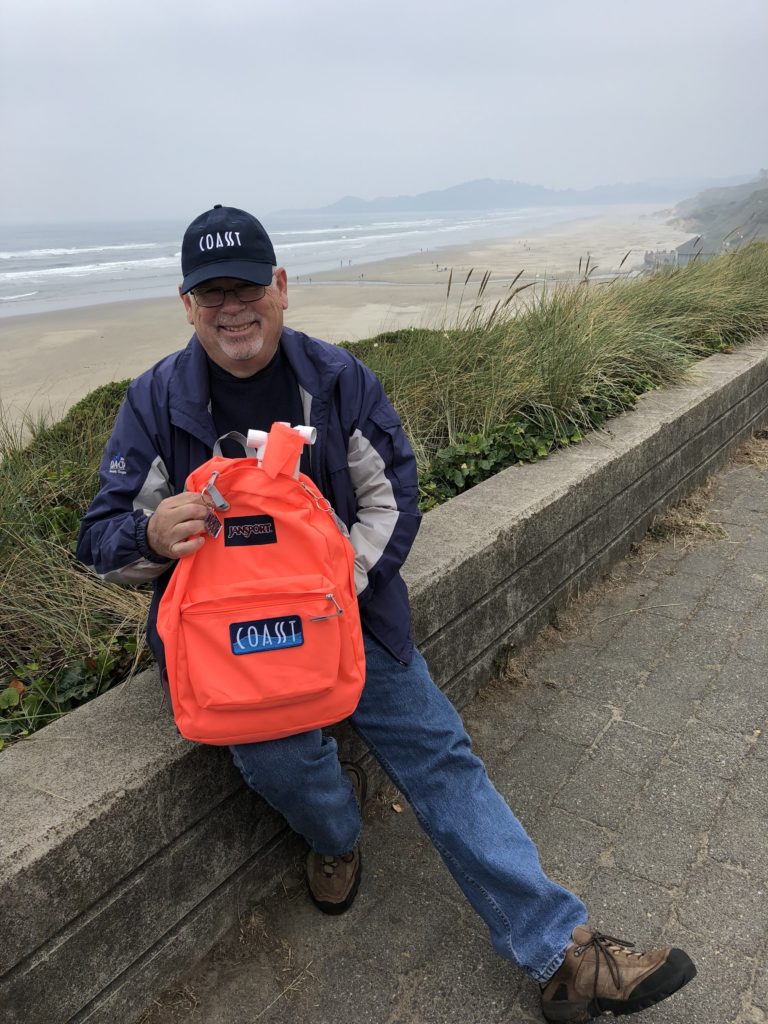When a person spends a lot of time searching for things that have washed in with the tide, and those things are often dead, certain metaphors tend to offer themselves up. One that has become semi-regularly associated with COASST is CSI. (That’s Crime Scene Investigative unit, for those of you who, like me, do not regularly watch the show.) COASST has been variously described, often by COASSTers themselves, as “CSI for dead birds,” or “CSI for garbage.”
For Mark Miranda, the metaphor hits a little closer to home than it might for most COASST volunteers. Where many of them have a background in biology and have to learn the finer points of ecological forensics, Miranda’s expertise comes from the other direction. “In junior high school I dissected a frog, and that’s about it as far as biology training goes,” he says. “But crime scene training, I’ve had a lot of that over the years, just doing search warrants and things like that.”
Miranda recently retired as the Chief of Police for the Newport Police Department, after a career in law enforcement that spanned forty-six years. He was born and raised in the San Francisco Bay area, in California, and first joined the police department in Tucson, Arizona. Then, in 1981, he and his wife moved to Newport, Oregon, and there they stayed. He had heard about COASST several years before he became a volunteer, and while he was intrigued by it, he just didn’t have the time at first. But once he retired, he was looking for things to do, and he saw a flier for a training session at the Hatfield Marine Science Center. He went and signed up to search for marine debris. He now surveys Seal Rock beach, a few miles north of Newport. The beach is quiet and secluded, and on a typical Oregon summer day, surveys are quite pleasant. “I pick up after people, and I pick up after the ocean,” Miranda says.
So is surveying for marine debris really the same as working a crime scene? “The techniques are basically the same,” Miranda allows. “You see something, you photograph it, you measure it, you collect it, try to identify what the object it is. So it is kind of what I would do in my job.” As for whether he has ever thought of adding beached birds to his surveys, which would seem a natural extension from his old line of work, here Miranda demurs. “I’ve been dealing with dead things all my life, so it’s nice not to need to anymore,” he says.
The debris can more than stand up in its own right ecologically. Miranda likes that he is adding a small piece to a potentially enormous puzzle, and he knows from experience how small puzzle pieces can be the key to the whole thing. Also, scrutinizing debris that may have been drifting for months or even years presents its own special challenges, its own mysteries. “Most of what I find is pretty weather-beaten, just broken bits or plastic, things like that,” Miranda says. “So I’m never too sure what it was.”

